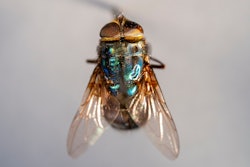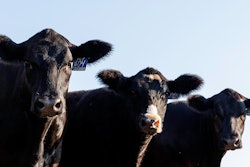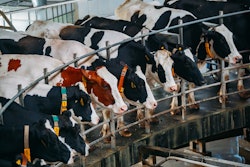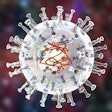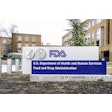
One Health is a term often used in improving the health of humans and animals alike, yet Megin Nichols, director of the Centers for Disease Control and Prevention (CDC) Division of Foodborne, Waterborne and Environmental Diseases, says it is a concept that is often difficult for people to understand.
Nichols, who has more than 15 years of experience in working with zoonotic diseases through both state and federal agencies, spoke at the Kansas State University Henry C. Gardiner Global Food Systems Lecture on September 16 in Manhattan, Kansas. During her talk, Nichols explained what One Health looks like for her in her day-to-day work, breaking it down into categories. Those are:
Ongoing relationships with animal agencies
One Health looks like ongoing relationships with animal agencies, Nichols said, regardless of whether or not a person works for a human health or an environmental health agency, that relationship is key to the work involved.
Understanding the culture of agriculture
This can be something as simple as wearing the appropriate attire when responding to an animal disease situation. Often, if there are teams that are going to respond to an animal disease situation, one of the things Nichols will ask them is what shoes are they going to wear. She says if a person shows up in dress shoes, they are not fully understanding and respecting the culture.
Access to integrated human and animal surveillance
One example Nichols gave is how she often gets asked how much antimicrobial resistance is due to people, how much is due to animals and how much is actually naturally occurring as an inherent property of the bacterial organism. She says questions like that are hard to answer because “it's very rare to actually have funding and support for integrated surveillance.”
Protocols for conducting joint response investigation
Nichols said she has spent a lot of time developing protocols and said to the audience that if anybody needs a protocol for joint response investigations, she might have one in her library. Key to responding to a disease situation in the best way possible is knowing who should do what.
“Who's in charge? What are your roles? What are your responsibilities? And how do we work together? That's something that in order to truly be effective in our jobs, we must do,” she said.
Agreements for sharing biological samples and lab results
Getting data sharing agreements can be difficult, but it is important, she said. Such agreements are helpful, for example, when getting details about the genetic sequence of some specimens.
Communication
Nichols talked about the importance of establishing lines of communication with agriculture and animal industry, as well as establishing plans for unified communication and messaging.
It is important that all sharing messages are “speaking with one voice and one message,” whether it's something like the name we call a specific disease, or the way we message that values and takes into account different perspectives, she explained.
The need to build linkages and trust
Nichols said people involved in human and animal health need to develop trust with people they may potentially work with should a disease outbreak occur.
“I have to say, this has saved me so many times. To have that one person's phone number stored in your cell phone that you know you can call at four o'clock on a Friday, and even though it's going to ruin their day, they're still going to pick up the phone because they have that trust,” she said. “That's really important.”



